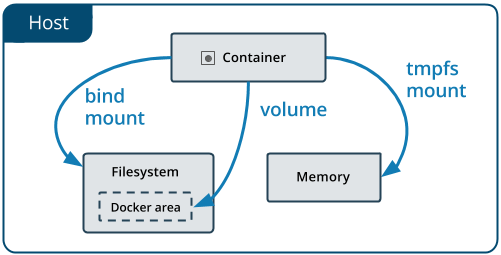# Introduction By default all files created inside a container are stored on a writable container layer. That means that: - If the container no longer exists, the data is lost, - The container's writable layer is tightly coupled to the host machine, and - To manage the file system, you need a storage driver that provides a union file system, using the Linux kernel. This extra abstraction reduces performance compared to `data volumes` which write directly to the filesystem. Docker provides two options to store files in the host machine: `volumes` and `bind mounts`. If you're running Docker on Linux, you can also use a `tmpfs mount`, and with Docker on Windows you can also use a `named pipe`.  - `Volumes` are stored in the host filesystem that is managed by Docker. - `Bind mounts` are stored anywhere on the host system. - `tmpfs mounts` are stored in the host memory only. Originally, the `--mount` flag was used for Docker Swarm services and the `--volume` flag was used for standalone containers. From Docker 17.06 and higher, you can also use `--mount` for standalone containers and it is in general more explicit and verbose than `--volume`.
Click the virtual machine below to start practicing